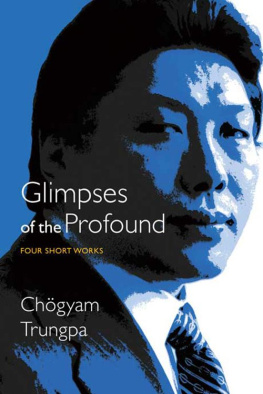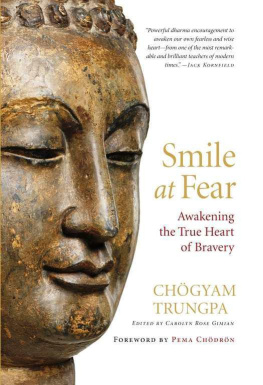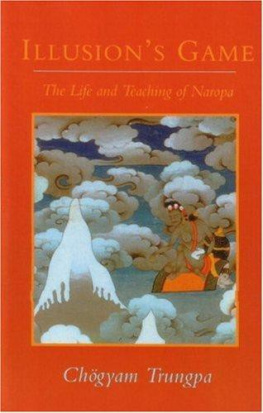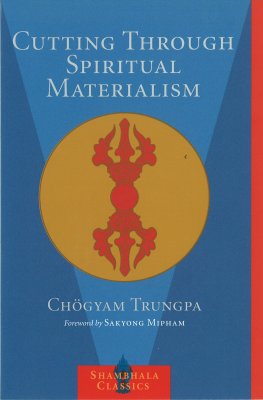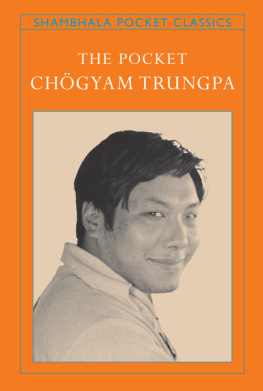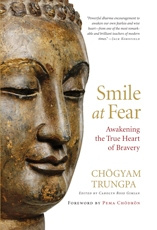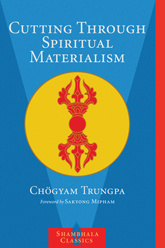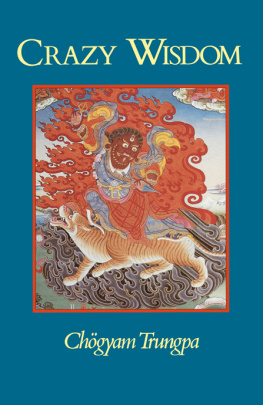ABOUT THE BOOK
At the beginning of his North American teaching career, Chgyam Trungpa conducted five pivotal seminars on various dharmic topics. The teachings from these seminarsoriginally published as four separate volumes and including Q&Aare now available in this single volume:
- Glimpses of Mahayana, on the discovery and characteristics of buddha nature
- Glimpses of Shunyata, on the central mahayana teaching of emptiness
- Glimpses of Space, on the inseparability of the vastness of the feminine principle and the dynamism of the masculine principle
- Glimpses of Realization, on the three bodies of enlightenment (dharmakaya, sambhogakaya, nirmanakaya)
In these short, penetrating talks and lively exchanges with his early Western students, the Venerable Chgyam Trungpa Rinpoche presents the essential teachings of Tibetan Buddhism in a direct and experiential way. The talks resonated intensely with his audiences when they were given, and they continue to inspire those who wish to look further into the profundity of human experience. This collection provides direct glimpses of the possibility of liberation, the opening of the human heart, and the awakening of ones true potential.
CHGYAM TRUNGPA (19401987)meditation master, teacher, and artistfounded Naropa University in Boulder, Colorado, the first Buddhist-inspired university in North America; the Shambhala Training program; and an international association of meditation centers known as Shambhala International. He is the author of numerous books, including Shambhala: The Sacred Path of the Warrior , Cutting Through Spiritual Materialism , and The Myth of Freedom .
Sign up to receive weekly Tibetan Dharma teachings and special offers from Shambhala Publications.

Or visit us online to sign up at shambhala.com/edharmaquotes.
Glimpses of the Profound

Four Short Works
Chgyam Trungpa
E DITED BY J UDITH L. L IEF

SHAMBHALA
BOULDER
2016
Shambhala Publications, Inc.
4720 Walnut Street
Boulder, Colorado 80301
www.shambhala.com
2016 by Diana J. Mukpo
Editors Introduction 2016 by Judith L. Lief
Cover art and design: Liza Matthews
The material in this book was originally published as four separate volumes by Vajradhatu Publications, an imprint of Shambhala Media. See for further copyright information.
All rights reserved. No part of this book may be reproduced in any form or by any means, electronic or mechanical, including photocopying, recording, or by any information storage and retrieval system, without permission in writing from the publisher.
Library of Congress Cataloging-in-Publication Data
Names: Trungpa, Chgyam, 19391987, author. | Lief, Judith L., editor.
Title: Glimpses of the Profound: Four Short Works / Chogyam Trungpa; edited by Judith L. Lief.
Description: Boulder: Shambhala, 2016. | originally published as four separate volumes by Vajradhatu Publications. | Includes index.
Identifiers: LCCN 2015013654 |eISBN 978-0-8348-4014-0 | ISBN 9781611803037 (paperback: alk. paper)
Subjects: LCSH: Trungpa, Chgyam, 19391987Sermons. | Buddhist sermons. | BISAC: RELIGION / Buddhism / Tibetan. | RELIGION / Buddhism / General (see also PHILOSOPHY / Buddhist).
Classification: LCC BQ7612 .T73 2016 | DDC 294.3/420423dc23
LC record available at http://lccn.loc.gov/2015013654
Contents
I T IS AN HONOR to be introducing this collection of teachings by the Vidyadhara Chgyam Trungpa Rinpoche, based on a set of five pivotal seminars he conducted between 1972 and 1975.
T RUNGPA R INPOCHES E ARLY S EMINARS
The Glimpses series was originally published by Vajradhatu Publications in five small volumes, each one consisting of a lightly edited transcript of both the main seminar talks and the discussion periods that followed. The intent of these books was to bring the reader as much as possible into the experience and ambiance of these early teachings, presented when Trungpa Rinpoche was first introducing the dharma in North America.
Trungpa Rinpoche came to North America in 1970 and embarked on a very vigorous teaching schedule that continued for seventeen years, until his death in 1987. He traveled extensively, giving individual talks and lecture series and three- to five-day seminars, as well as conducting longer retreats, such as the three-month-long Vajradhatu Seminary programs.
In presenting the dharma, Trungpa Rinpoches preferred format was the ITS, or Intensive Training Seminar, and he was always careful to conduct his talks within an environment of meditation or sitting practice. For instance, a weekend ITS would typically begin with a Friday-night talk and continue with two full days of sitting and walking meditation, each followed by an evening talk. Residential programs, such as those held at Tail of the Tiger (now Karm Chling) or Rocky Mountain Shambhala Center (now Shambhala Mountain Center), would also include work shifts.
With the ITS format, participants do not simply listen passively to a series of talks: they are encouraged to engage with the material through discussion groups, reflection, and questioning, and they do so in the context of group meditation practice. Trungpa Rinpoche talked often about the container principle, the idea that setting up a proper container, or atmosphere, as an individual and as a group can draw down the power of the teaching. The most essential component of establishing such a container is meditation practice. Through such practice, an environment can be created in which the openness of the students and the benevolence of the teacher are brought together. That connection is what makes genuine dharma possible. So establishing a proper container is crucial.
Trungpa Rinpoches emphasis on group sitting practice was unique among Tibetan teachers. In his encounter with the West and its various spiritual traditions, he had seen how conceptual and heady people tended to be. He once remarked, after observing a Holy Communion ritual, how beautiful the ceremony was but how unfortunate it was that so few of those participating were really fully present. He realized that for his students to hear the dharma, they would first need to settle down, learn how to work with their minds, and be more present. As a model for how to approach this, he turned to the Zen tradition.
In the early seventies Trungpa Rinpoche met many of the leading Zen teachers who were active in the United States. He made a particularly close connection with the great Zen master Shunryu Suzuki Roshi of the San Francisco Zen Center. As Trungpa Rinpoche developed his own centers, he drew on a number of Zen forms, particularly the form of extended group meditation practice that alternated sitting and walking meditation for extended periods of time, from one day to an entire month. He was innovative in his use of Zen forms in conjunction with traditional Tibetan Buddhist teachings on mindfulness and awareness. By his emphasis on the container principle, and by alternating study and practice in his teaching programs, he was able to help students develop both mind and heart, both intellect and intuition.
T HE G ROUND OF S ITTING M EDITATION
It is hard to overstate the importance Trungpa Rinpoche placed on sitting practice. Repeatedly, after almost every talk, he would remind studentseven implore themto practice. He went so far as to say that without sitting practice, study is a waste of time. Here are a few examples:
Next page
